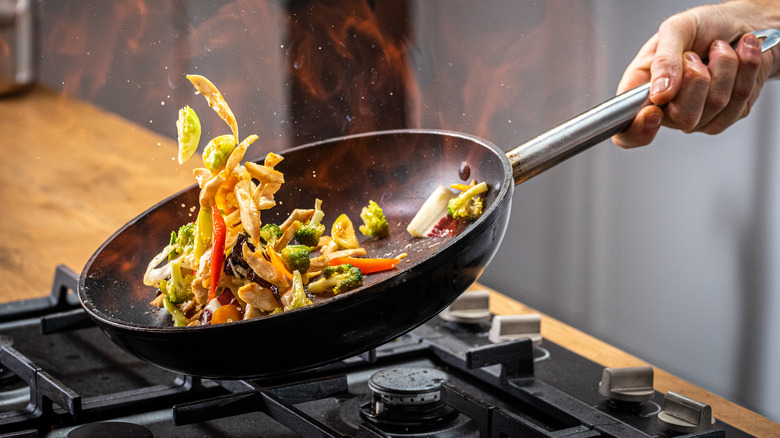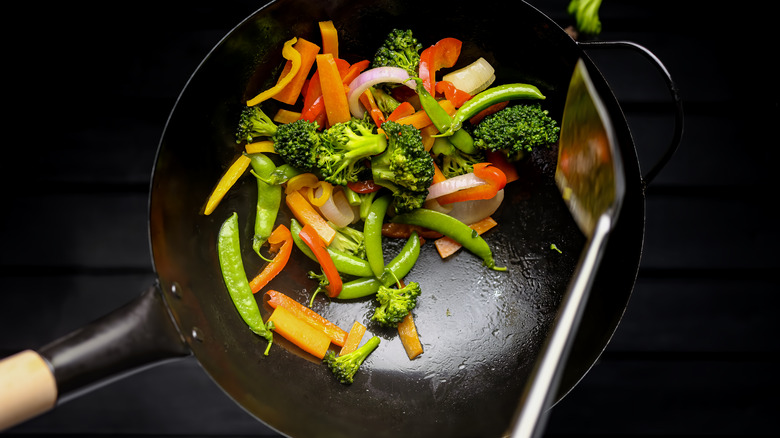You Don't Need To Buy Special Oil For Perfectly Cooked Stir-Fry
When you're trying a new recipe or technique, it's easy to go overboard buying the "right" ingredients at the grocery store. It's exciting to branch out, but if you buy new ingredients for every recipe, you'll soon end up with an empty bank account and an overstuffed pantry. You can usually find substitutes in your own kitchen — even if you're making a dish from another culture or cuisine. So, hold off on the special ingredients until the dish becomes part of your regular rotation.
For home cooks used to Western fare, making stir-fry might seem like an excuse to scour the shelves of your local Asian grocer for specialty oils and sauces. But you don't need peanut oil, soy oil, or special oil blends sold specifically for stir-fries. After all, some of the best stir-fry is made from scraps — part of the appeal of the dish is its ability to bring life back into leftover veggies and rice.
Common oils such as vegetable oil and canola oil will work fine. They're both capable of withstanding the high temperatures required for good stir-fry. Concerned that your stir-fry won't taste "authentic" without peanut oil? Add flavor with sauces and finishing oils instead. You should only be using a small amount of oil for stir-frying, anyway.
Even olive oil works for stir-fries
Canola oil and vegetable oil might work well for stir-fry, but what if olive oil is the only thing left in your cupboard? Not a problem. Despite its reputation as a low-heat oil, olive oil can withstand higher temperatures than many people realize — and there are also many types of olive oil with different cooking considerations. Refined olive oil can reach temperatures of up to 465 degrees Fahrenheit, outperforming both vegetable and canola oil, which smoke at 400 to 450 degrees Fahrenheit. Decent quality extra-virgin olive oil also holds its own, with a smoke point of around 410 degrees Fahrenheit.
It's possible that olive oil developed its reputation as an oil with a low smoke point at a time when low-quality olive oil was more prevalent in the United States. That said, olive oil does have a strong taste — so only use it if you're sure your flavors won't clash. But what about wok hei, that elusive, smoky, caramelized flavor found in good restaurant stir-fry? Doesn't that require extra-high heat?
Yes, it does. However, good, consistent wok hei requires such high heat that it's nearly impossible to achieve on a standard Western-style kitchen range. That's not to say that it can't be done, but considering that some wok hei methods call for a blow torch, it's probably not something you'll get on your first try. But once your stir-fry game gets to blow torch level? By all means, buy whatever oil you want.

